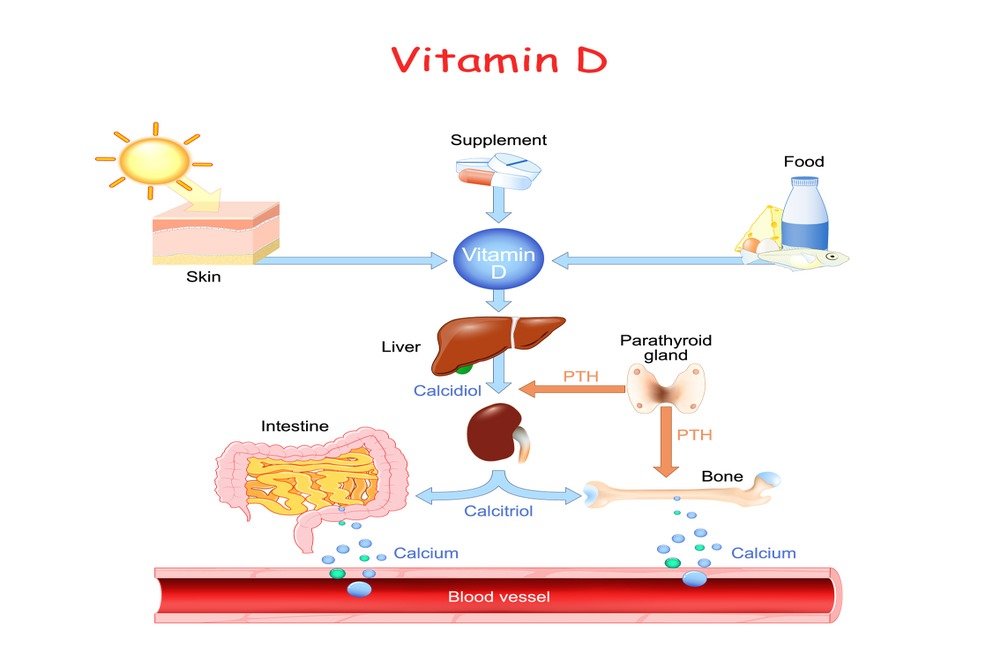Vitamin D3 Function

Vitamin D3 is a biological form of vitamin D compound which acts as a prohormone. Vitamin D3 produces in the skin after an exposure to ultraviolet (UV) irradiation of 7-dehydrocholesterol and for this very reason, it refers to as “sunshine vitamin.” As vitamin D3 is biologically inert, it must need a series of metabolic reactions first in the liver it turns into 25-hydroxyvitamin D3 and then in the kidney transforms into 1α 25-dihydroxyvitamin D3 before function. The hormonal type of vitamin D3 i.e., 1α 25-dihydroxyvitamin D3 works through a nuclear receptor to go on with its numerous functions including phosphate absorption in the gut, calcium absorption, calcium reabsorption in the kidneys, and calcium mobilization in bones.
Vitamin D3 has several other non-calcemic functions in the body, which makes it an essential fat-soluble vitamin for the health and well-being. Following are some important functions of vitamin D3:
Calcium absorption
Although vitamin D3 comes under the category of vitamins but D3 cleverly turns into a hormone in the body. So, it flows in the bloodstream to aid in the absorption of phosphorus and calcium which is perhaps the most vital function of vitamin D3 carrying an immense body for bone health and normal metabolism. In addition, almost 99% of the vitamin D3 supply in our bodies burn out in regulating the calcium levels in the body. The remaining portion of the vitamin D3 directs in the strengthening of the immune system and maintains muscle strength.
